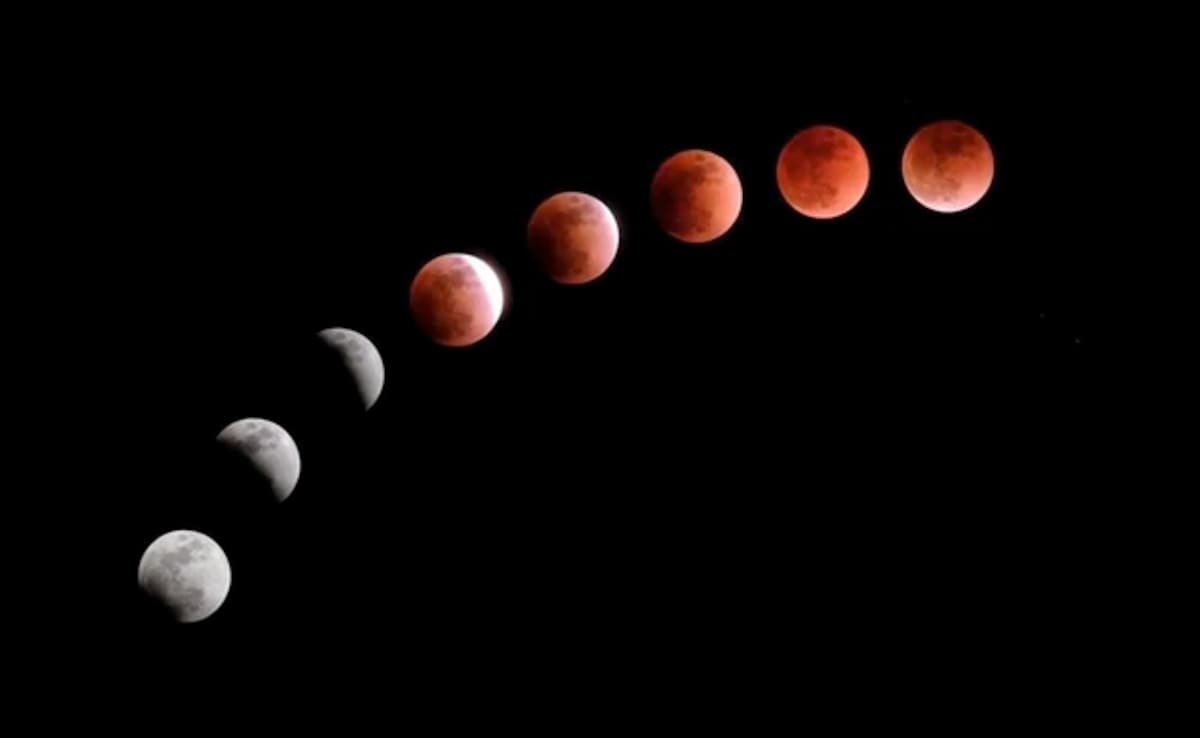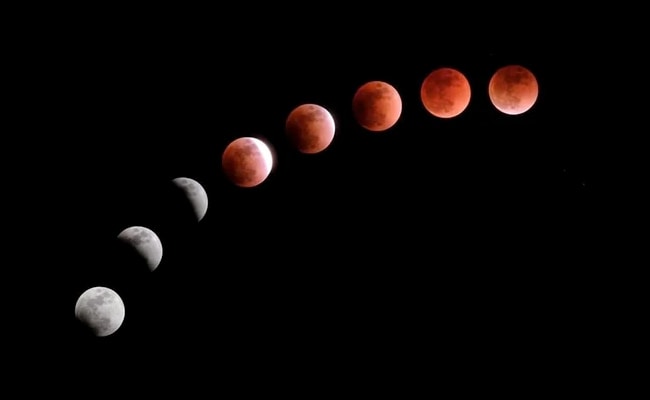

New Delhi:
The year 2025 will see four significant celestial events – two solar eclipses and two lunar eclipses – but only one of them will be visible from India, says Rajendra Prakash Gupt, Superintendent of the Jiwaji Observatory in Ujjain. Speaking to news agency PTI, Mr Gupt gave details of the upcoming eclipses and the places from where they can be observed.
First Lunar Eclipse in March: Not Visible From India
The year’s first major astronomical event will occur on March 14, with a total lunar eclipse. Unfortunately, this event will take place during daytime in India, rendering it invisible to Indian observers.
“The lunar eclipse will be visible in regions such as America, Western Europe, Western Africa, and over the North and South Atlantic Ocean,” Mr Gupt explained, as per PTI.
Partial Solar Eclipse From March: Another Miss For India
Later in March, a partial solar eclipse is slated for the 29th. However, Indian skywatchers will miss this as well.
“This eclipse will be visible in North America, Greenland, Iceland, the North Atlantic Ocean, Europe, and north-western Russia,” said Mr Gupt.
Full Lunar Eclipse From September: Visible In India
Indian astronomy enthusiasts can look forward to September 7 – 8, when a full lunar eclipse will be visible across the country.
“The full lunar eclipse will also be visible in other countries of Asia as well as Europe, Antarctica, the Western Pacific Ocean, Australia, and the Indian Ocean region,” Mr Gupt said.
This stunning event will last from 8:58 PM to 2:25 AM, painting the moon a deep red hue.
Final Eclipse of 2025: Not Visible From India
The last celestial event of the year will be a partial solar eclipse on September 21–22. This, too, will not be visible in India.
“The partial solar eclipse can be observed in New Zealand, Eastern Melanesia, Southern Polynesia, and West Antarctica,” Mr Gupt added.
India will also see three major meteor showers, starting with the Quadrantids on January 3-4, where 80-120 meteors per hour will illuminate the night sky. The Perseids, visible on August 12-13, will offer up to 100 meteors per hour, while the Geminids on December 14-15 promise a display of 150 meteors per hour. These meteor showers require no special equipment to observe, allowing everyone to enjoy the spectacle.
In 2025, three supermoons will also grace the skies on October 7, November 5, and December 5. These will appear larger and brighter than usual, providing a breathtaking view. On January 16, the rare Mars Opposition, which occurs every 2 years and 50 days, will bring the red planet closer to Earth. Meanwhile, the Pink Micromoon on April 13 will combine a full moon with its farthest distance from Earth, creating a unique celestial phenomenon.



